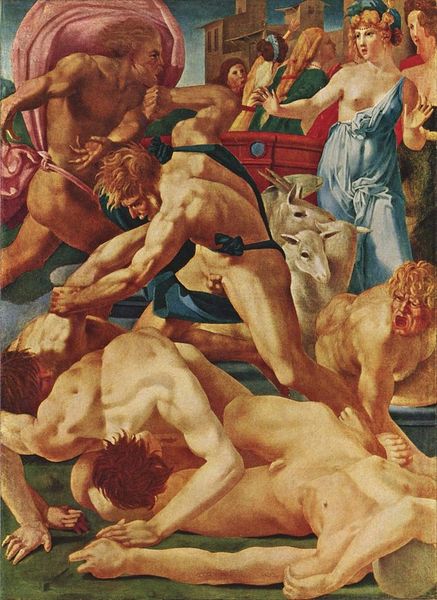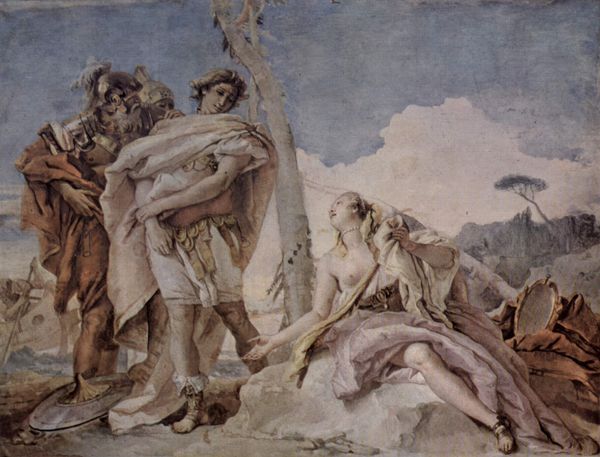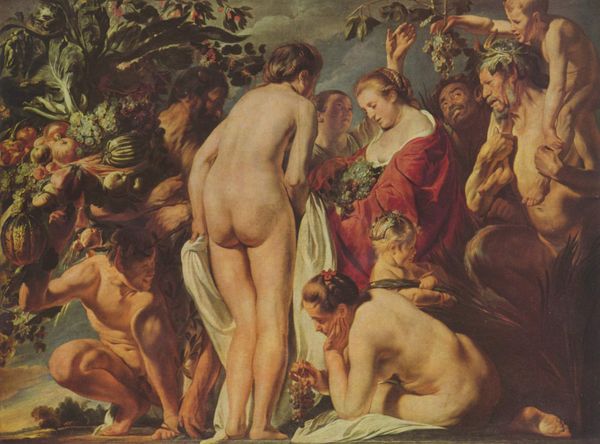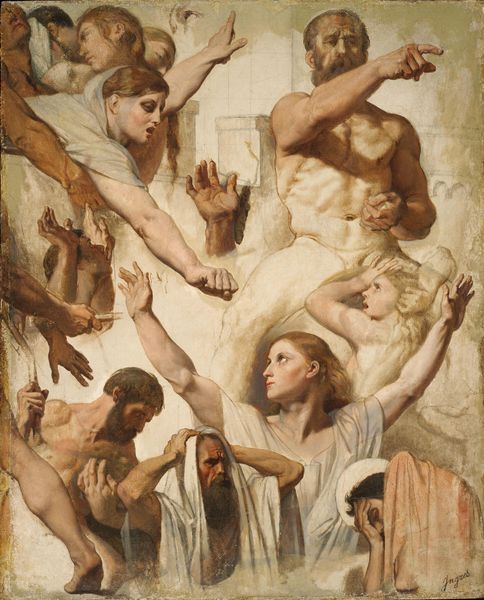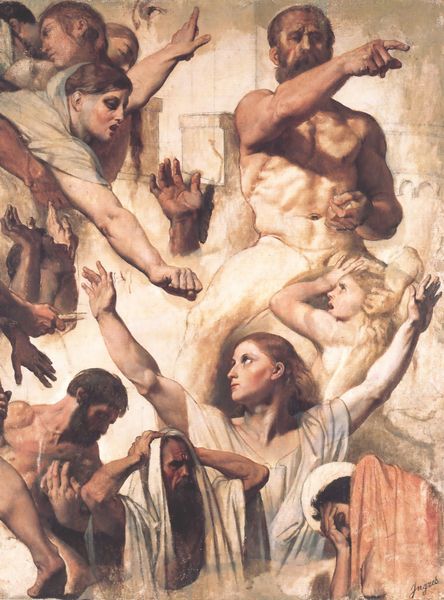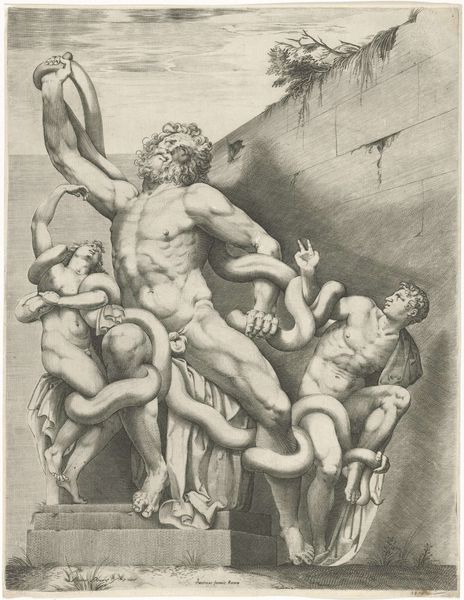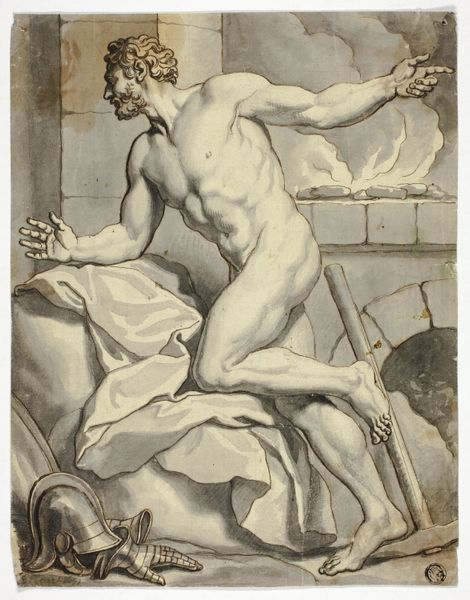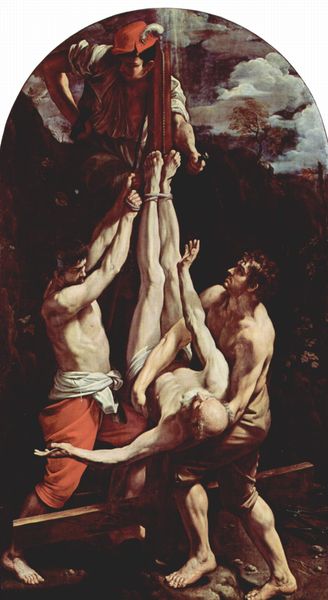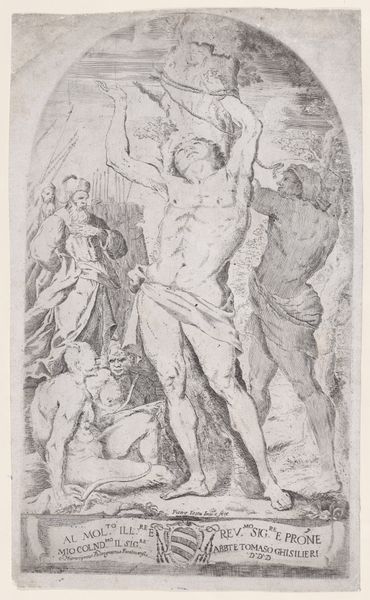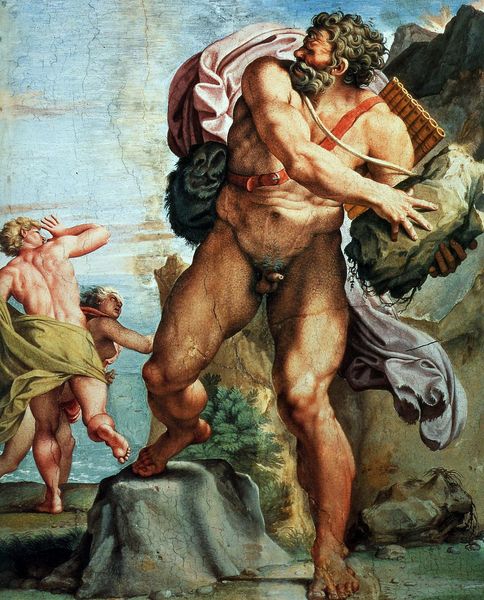
Study for The Martyrdom of St. Symphorien 1834
0:00
0:00
jeanaugustedominiqueingres
Musée Ingres, Montauban, France
drawing, oil-paint
#
portrait
#
drawing
#
oil-paint
#
charcoal drawing
#
charcoal art
#
oil painting
#
christianity
#
history-painting
#
academic-art
#
charcoal
#
nude
Copyright: Public domain
Curator: Let's delve into this study by Jean-Auguste-Dominique Ingres, completed in 1834. It's rendered with oil paint, a preliminary exploration for his later painting, "The Martyrdom of Saint Symphorien". Editor: Immediately, I'm struck by the intense drama, almost theatrical. There’s a cluster of figures, all muscular and highly charged, focused on something outside the frame. It evokes a feeling of dread and anticipation. Curator: It is very theatrical. As a study, the layering of the figures reveals the academic artistic processes underpinning nineteenth century salon painting. Ingres focuses on draftsmanship in creating the central figures. We see that even at the scale he gives us here, material constraints, studio processes of male model culture become tools for monumental historical paintings. Editor: I find it interesting to unpack the symbolism within this chaotic scene. Given the title, “The Martyrdom of Saint Symphorien," we are witnessing the prelude to a sacred execution. Notice the upward pointing finger by many figures here -- is it an expression of blame? Do they function as accusatory gestures to rally the other figures present in the frame? Ingres skillfully conveys the rising tension just before the sacrifice. Curator: It makes me wonder about the process of sourcing models. Were these working-class men, being offered work in Ingres's studio? Were there social repercussions to being cast in a saint’s death tableau? Ingres relies heavily on drawings to produce this oil painting, emphasizing academic method rather than immediacy of painting on site or “en plein air.” Editor: Perhaps. And I am struck with the saint's downward gaze. A kind of meek acceptance almost, while his persecutors exhibit varying levels of hatred and conviction. He is shown not to meet the violence back but rather with a passive resignation. In psychological terms, it highlights the human capacity for faith and its contrast with fanaticism. Curator: Absolutely, while those complexities of faith and its representation are undoubtedly present, considering the materiality offers insights to academic production processes. For instance, look closely at the bottom of the work, to see traces of drawing that are visible after layers of glazing have been applied. Here Ingres does not hide the charcoal or pencil sketches. We gain a unique insight into the construction of the oil study here that is absent in a more traditional canvas painting from the French academy. Editor: A good point; seeing the layers adds another layer of understanding to this dramatic composition. It provides the basis from which Ingres planned and envisioned the rest of the monumental piece to come. Curator: Indeed, an exciting blend of craft and high art production in service to historical narratives. Editor: A powerful glimpse into the past through its emotional intensity and carefully chosen imagery.
Comments
No comments
Be the first to comment and join the conversation on the ultimate creative platform.
